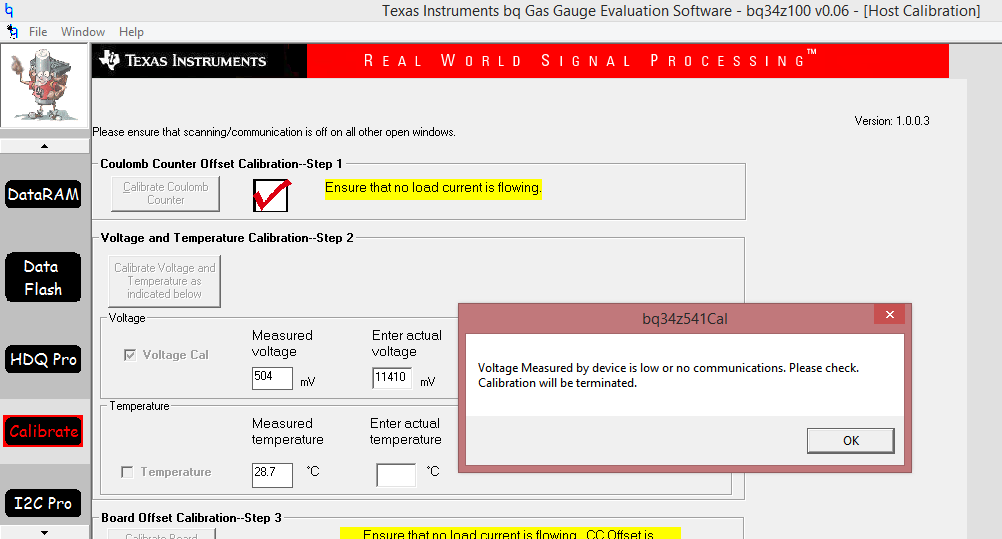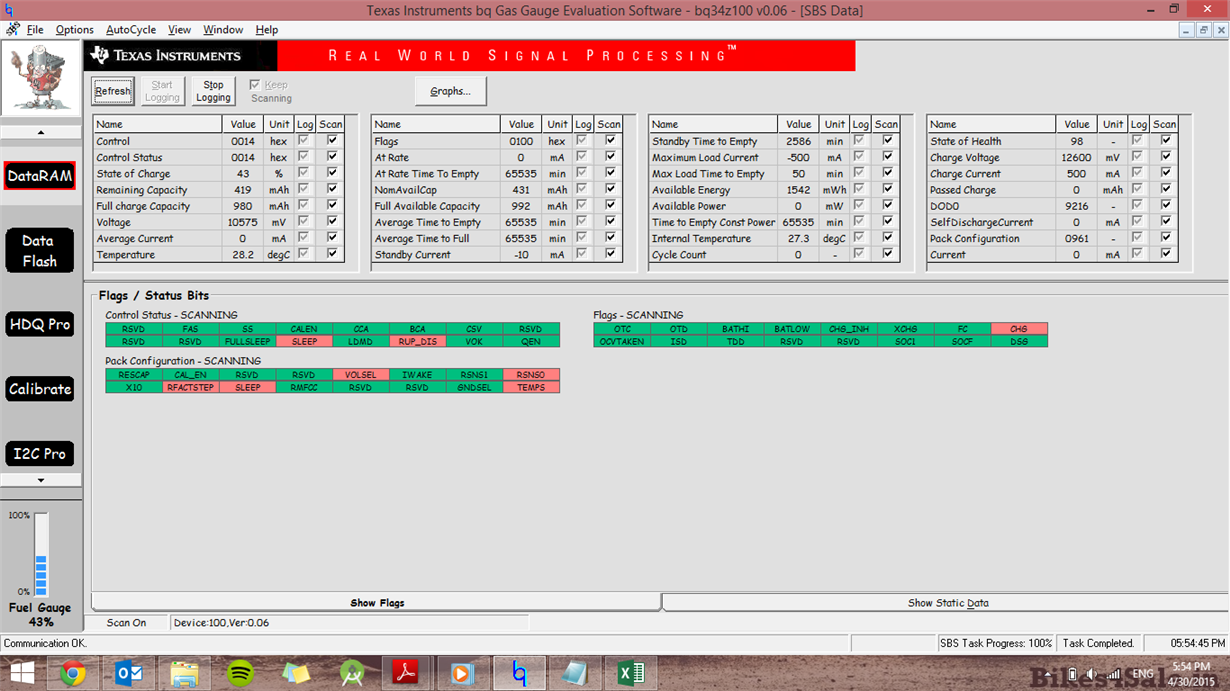I am trying to connect a bq34z100 EVM with a EVM 2300 in Multi-cell mode with 4 cells. On connection to the PC and the bq evaluation software, the software does not display the complete value of the battery (4 cells in series). If I use a single cell to connect to the EVM, it shows the data correctly. On trying to write the registers, the data is not updating even after number of cells was changed to 4 (for multi-cell mode). Also I’d like to know how to configure the LEDs so as to indicate the SOC. I tried in the LED comm register but it didn’t reflect in the register.
Thanks



